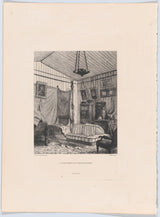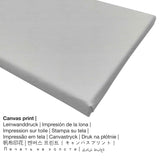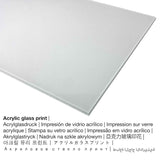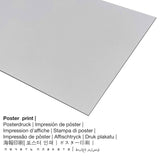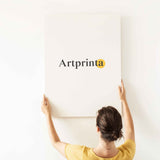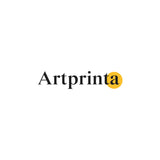Adolphe Martial Potémont, 1873 - Ụlọ nke Count Mornay - ọmarịcha nka
Ụtụ gụnyere. Mbupu gbakọrọ na ndenye ọpụpụ.
Nweta ihe ebipụta nka kacha amasị gị
Anyị na-enye ihe dị iche iche dị iche iche na nha maka ngwaahịa ọ bụla. Nha na ihe ndị a bụ nhọrọ anyị na-enye gị maka nkeonwe:
- Mbipụta aluminom (aluminium dibbond): This is a metal print manufactured on aluminium dibond with a true depth effect, creating a fashionable impression with a non-reflective surface structure. For your Direct Aluminium Dibond option, we print your work of art on the aluminium white-primed surface. The direct UV print on Aluminum Dibond is the most popular entry-level product and is a truly modern way to showcase fine art reproductions, because it puts all of the viewer’s focus on the replica of the artwork.
- Kwaaji: A canvas direct print is a printed canvas mounted on a wooden stretcher. What is more, canvas print produces a familiar and positive feeling. A canvas of this artwork will let you turn your new art print into a large artpiece like you know from galleries. The advantage of canvas prints is that they are relatively low in weight, which means that it is easy and straightforward to hang the Canvas print without extra wall-mounts. Therefore, a canvas print is suitable for any kind of wall.
- Mbipụta iko acrylic (nke nwere ezigbo mkpuchi iko): The acrylic glass print, which is often labelled as a plexiglass print, will transform your favorite original artwork into stunning wall decoration and forms a great alternative option to canvas or aluminium dibond prints. The artwork is made thanks to the help of state-of-the-art UV print machines. The major benefit of an acrylic glass print is that contrasts and also minor color details become visible due to the precise tonal gradation.
- Mbipụta akwụkwọ mmado (akwa akwa akwa): The Artprinta poster print is a UV printed cotton canvas paper with a granular structure on the surface, that reminds the actual masterpiece. It is perfectly suited for framing the art print using a personal frame. Please note, that depending on the size of the poster we add a white margin of around 2-6cm round about the artwork to facilitate the framing.
Ihe dị mkpa: We try whatever we can in order to depict our art products as closely as possible and to demonstrate them visually. At the same time, the pigments of the printing material, as well as the printing might differ to a certain extent from the image on the monitor. Depending on the screen settings and the quality of the surface, not all color pigments are printed as realistically as the digital version depicted here. Given that the art prints are processed and printed manually, there might also be slight differences in the motif's size and exact position.
Nkọwa zuru oke site na ụlọ ngosi nka (© Nwebiisinka - nke Ụlọ ihe ngosi nka nke Obodo ukwu - Museumlọ ihe ngosi nka nke Obodo)
Delacroix accompanied the Comte de Mornay to Morocco and made an important series of watercolors during and after that journey. In 1833 he made an oil painting of the comte's apartment on the rue de Verneuil, Paris whose interior was decorated with fabric to resemble a blue and white striped tent. In 1873 the painting was exhibited as part of the collection John W. Wilson, at La Galerie du Cercle Artisque et Litterare, du Bruxelles and this etching created to illustrated a related catalogue.
Details
In 1873 Adolphe Martial Potémont painted this piece of art called "The apartment of the Count Mornay". The original has the size: Plate: 9 1/4 × 6 3/16 in (23,5 × 15,7 cm) Sheet: 13 3/8 × 9 13/16 in (34 × 25 cm) and was painted on the medium etching. Today, the piece of art can be viewed in in the Ụlọ ihe ngosi nka nke Metropolitan nchịkọta na New York City, New York, Njikota Obodo Amerika. With courtesy of - The Metropolitan Museum of Art, New York, Gift of Donato Esposito, 2015 (ikike - ngalaba ọha). The creditline of the artpiece is: Gift of Donato Esposito, 2015. What is more, the alignment of the digital reproduction is in Eserese format ma nwee oke akụkụ nke 3: 4, nke pụtara na ogologo bụ 25% mkpụmkpụ karịa obosara. Adolphe Martial Potémont was a painter, whose art style can be attributed mainly to Realism. The painter was born in 1828 na nwụrụ anwụ na afọ nke 55 na 1883.
Ozi ndabere ọrụ nka
| Aha nke ọrụ nka: | "The apartment of the Count Mornay" |
| Nhazi: | sere |
| Okwu mkpokọta: | nkà nke oge a |
| oge: | 19th narị afọ |
| Year: | 1873 |
| Ogologo afọ nka nka: | karịa afọ 140 |
| Agba na: | ihe ozo |
| Nha izizi (ọrụ nka): | Efere: 9 1/4 × 6 3/16 na (23,5 × 15,7 cm) Mpempe akwụkwọ: 13 3/8 × 9 13/16 na (34 × 25 cm) |
| Ụlọ ihe ngosi nka: | Museumlọ ihe ngosi nka nke Obodo |
| Ebe ngosi nka: | New York City, New York, Njikota Obodo Amerika |
| Weebụsaịtị nke ihe ngosi nka: | Museumlọ ihe ngosi nka nke Obodo |
| Ikikere nke ihe osise: | ngalaba ọha |
| Site n'aka: | The Metropolitan Museum of Art, New York, Onyinye nke Donato Esposito, 2015 |
| Ebe E Si Nweta: | Onyinye nke Donato Esposito, 2015 |
Ngwaahịa a
| Bipụta ụdị ngwaahịa: | nka nka |
| Usoro mmeputakwa: | dijitalụ mmeputakwa |
| Produzọ mmepụta: | Mbipụta UV ozugbo (mbipụta dijitalụ) |
| Mmalite nke ngwaahịa a: | German mmepụta |
| Stockdị ngwaahịa: | a na-achọ |
| Eji ngwaahịa a chọrọ: | mgbidi gallery, nchịkọta nka (mmepụta) |
| Nhazi: | usoro eserese |
| Oke akụkụ: | ogologo ruo obosara 3: 4 |
| Oke akụkụ pụtara: | ogologo bụ 25% mkpụmkpụ karịa obosara |
| Akụrụngwa ị nwere ike ịhọrọ: | Mpempe akwụkwọ, akwụkwọ mmado (akwụkwọ akpa), mbipụta enyo acrylic (nwere ezigbo mkpuchi iko), mbipụta ọla (aluminium dibbond) |
| Mbipụta kanvas (akwa akwa na etiti ihe ndọtị) dị iche iche: | 30x40cm - 12x16", 60x80cm - 24x31", 90x120cm - 35x47", 120x160cm - 47x63" |
| Mbipụta iko acrylic (nke nwere ezigbo mkpuchi iko): | 30x40cm - 12x16", 60x80cm - 24x31", 90x120cm - 35x47", 120x160cm - 47x63" |
| Mpempe akwụkwọ mmado (akwụkwọ kwaaji) nha dị iche iche: | 30x40cm - 12x16", 60x80cm - 24x31", 90x120cm - 35x47" |
| Nhọrọ mbipụta aluminom: | 30x40cm - 12x16", 60x80cm - 24x31", 90x120cm - 35x47" |
| Nhazi mmeputa nka nka: | mmeputakwa na-enweghị isi |
Ozi omenkà Contextal
| Ihe nkiri: | Adolphe Martial Potémont |
| Ọrụ: | onye na-ese ihe |
| Nhazi nke onye nka: | omenkà nke oge a |
| styles: | Ihe ngosi |
| Nwụrụ na afọ nke: | 55 afọ |
| Afọ ọmụmụ: | 1828 |
| Nwuru: | 1883 |
© Nwebiisinka - ikike ọgụgụ isi nke, Artprinta.com (Artprinta)

